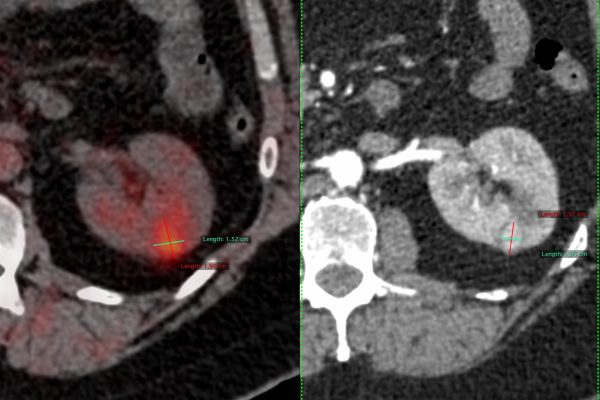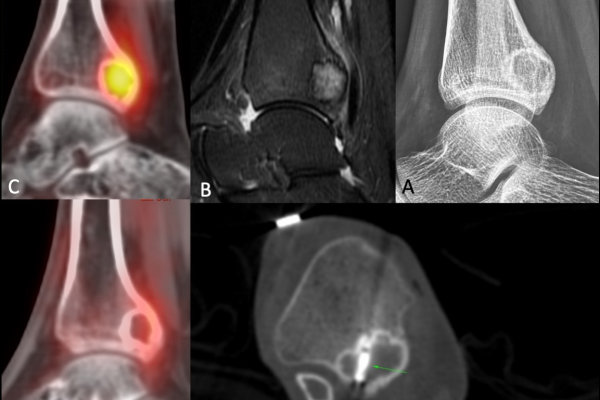Effective Approach for Spinal Osteoid Osteomas Management through Radiofrequency Ablation
Spinal osteoid osteomas, though rare, can induce excruciating pain and discomfort, disrupting one’s quality of life. Conventional treatments like medication or surgery often come with drawbacks, leaving patients seeking effective alternatives. Fortunately, radiofrequency ablation (RFA) emerges as a promising solution, offering precise and minimally invasive relief. In this comprehensive guide, we delve into the intricacies of RFA for spinal osteoid osteomas, uncovering its effectiveness and benefits.
Understanding Spinal Osteoid Osteomas:
Spinal osteoid osteomas represent a benign bone tumour primarily affecting the spine’s vertebral column. Characterised by localised pain that intensifies at night and responds poorly to conventional pain medication, these lesions can significantly impair mobility and comfort. Prompt diagnosis and intervention are crucial to alleviate symptoms and prevent complications.
The Role of Radiofrequency Ablation
Enter radiofrequency ablation, a game-changing procedure that targets and eliminates osteoid osteomas with remarkable precision. This minimally invasive technique involves the use of high-frequency electrical currents to generate heat, which in turn destroys the tumour tissue. Unlike conventional surgery, RFA entails smaller incisions, shorter recovery times, and reduced risks of complications, making it an attractive option for patients seeking relief without prolonged hospital stays or extensive rehabilitation.
How Radiofrequency Ablation Works
The magic of radiofrequency ablation lies in its simplicity and efficacy. Guided by advanced imaging techniques such as computed tomography (CT) or fluoroscopy, the interventional radiologist navigates a specialized needle to the site of the osteoid osteoma. Once positioned, the needle delivers radiofrequency energy, heating the tumour tissue and causing coagulative necrosis. Remarkably, this process selectively targets the tumour while sparing surrounding healthy tissue, minimising collateral damage and preserving spinal function.
The Power of Radiofrequency Ablation:
Radiofrequency ablation is a minimally invasive procedure that targets and destroys the nerve tissue responsible for transmitting pain signals from osteoid osteoma. Unlike traditional surgical methods, radiofrequency ablation offers several advantages, including:
Precision: Radiofrequency ablation precisely targets the affected tissue, minimising damage to surrounding areas.
Minimally Invasive: The procedure involves only a small incision, reducing the risk of complications and shortening the recovery time.
High Success Rate: Studies have shown that radiofrequency ablation achieves excellent outcomes in relieving pain associated with osteoid osteomas.
Procedure Overview:
During radiofrequency ablation, a specialized needle is guided to the site of the osteoid osteoma using advanced imaging techniques such as fluoroscopy or CT scan. Once positioned accurately, the needle delivers radiofrequency energy to the tumour, generating heat that destroys the abnormal tissue. This process effectively interrupts the pain signals transmitted by the tumour, providing significant relief to the patient.
Post-Procedure Recovery:
Following radiofrequency ablation, patients typically experience minimal discomfort and can resume normal activities shortly after the procedure. Some may require mild pain medication for a short duration, but the majority report significant improvement in symptoms within days. Regular follow-up appointments ensure that the treatment remains effective and any residual pain is promptly addressed.
Benefits of Radiofrequency Ablation:
Minimally Invasive: Unlike traditional surgical approaches, RFA requires only a small incision, minimising trauma and reducing recovery time.
Precise Targeting: Advanced imaging techniques ensure precise localization of the tumor, allowing for targeted treatment without affecting adjacent structures.
Rapid Relief: Patients often experience immediate pain relief following RFA, with long-term outcomes surpassing those of conservative therapies.
Low Risk of Complications: With its minimal invasiveness and precise nature, RFA boasts a low risk of complications, making it a safe option for patients of various ages and health conditions.
Navigating the Procedure:
Before undergoing RFA, patients undergo a thorough evaluation, including imaging studies and medical history assessments. During the procedure, patients may receive local anaesthesia to ensure comfort. Under the guidance of fluoroscopy or computed tomography (CT), the interventional radiologist precisely targets the tumour, delivering controlled heat to ablate the lesion while preserving surrounding tissues. The entire process typically takes under an hour, and patients can return home the same day with minimal post-procedural discomfort.
Post-Procedure Care and Follow-Up:
Following RFA, patients may experience mild discomfort or soreness at the treatment site, which usually resolves within a few days. Pain relief is often immediate, allowing individuals to resume daily activities shortly after the procedure. However, it’s essential to follow any post-procedure instructions provided by the healthcare team and attend scheduled follow-up appointments to monitor progress and ensure optimal outcomes.
Outcomes and Long-Term Management:
Radiofrequency ablation for osteoid osteoma yields impressive outcomes, with a significant proportion of patients experiencing complete resolution of symptoms. Long-term follow-up studies demonstrate sustained pain relief and minimal recurrence rates, highlighting RFA’s efficacy as a definitive treatment option. Additionally, ongoing advancements in technology and procedural techniques continue to enhance RFA’s safety and efficacy, promising even better outcomes for future patients.
Conclusion:
Spinal osteoid osteomas pose formidable challenges to patients and healthcare providers alike, often necessitating innovative solutions for effective management. Radiofrequency ablation emerges as a game-changer in the realm of osteoid osteoma treatment, offering precise, minimally invasive relief with impressive long-term outcomes. By harnessing the power of RFA, patients can reclaim their lives from the grip of debilitating pain, experiencing renewed mobility and comfort. As the landscape of interventional radiology evolves, RFA stands as a beacon of hope for those navigating the complexities of spinal osteoid osteomas.



